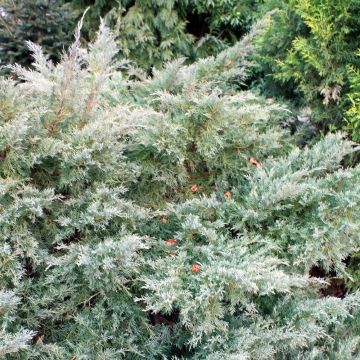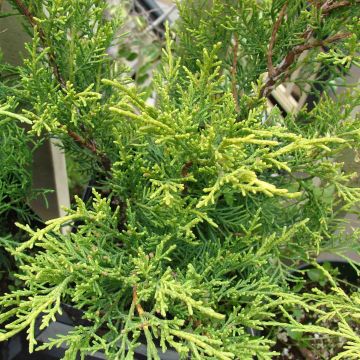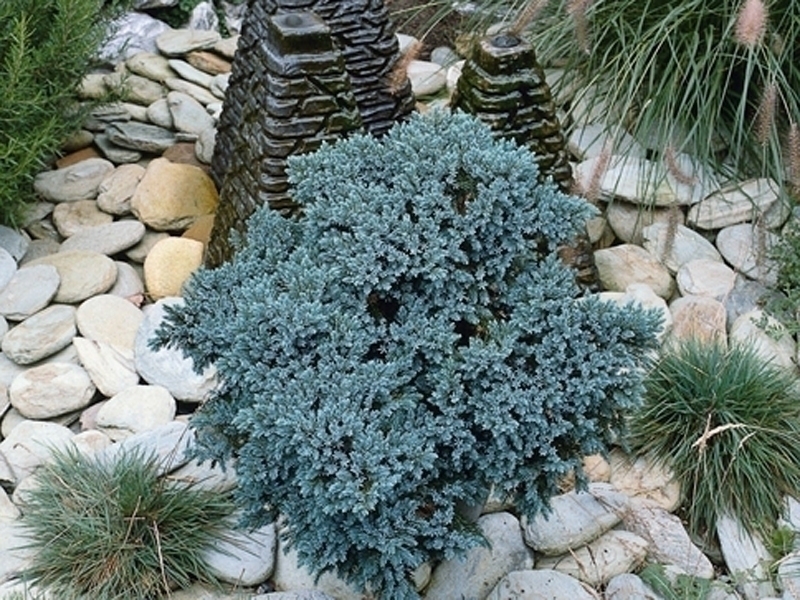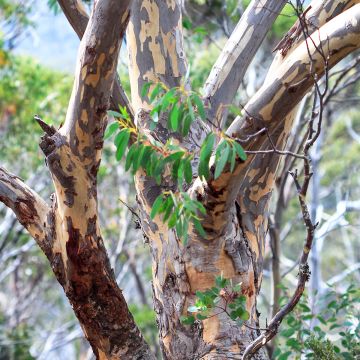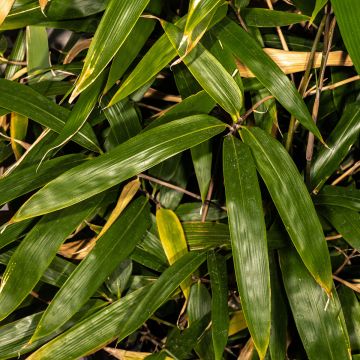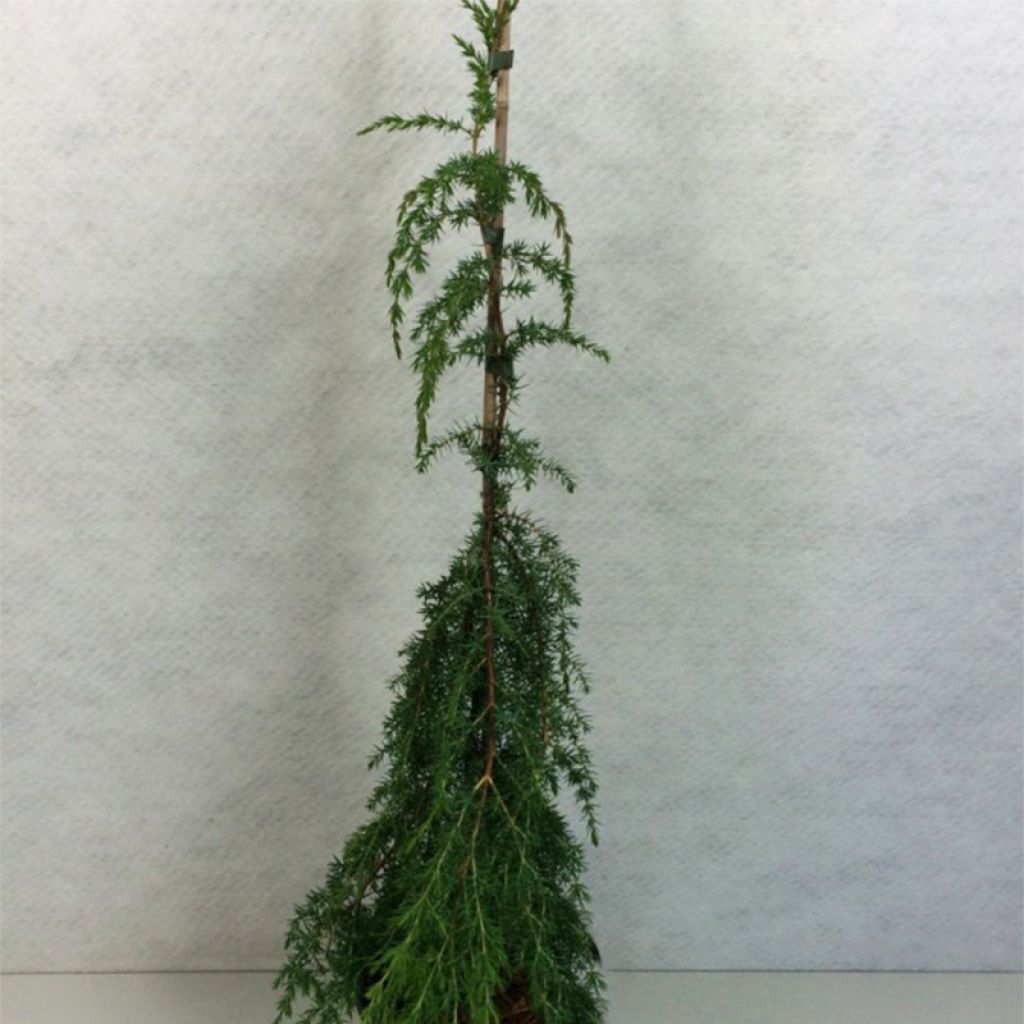

Juniperus communis Horstmann
Juniperus communis Horstmann
Juniperus communis Horstmann
Common Juniper
Special offer!
Receive a €20 voucher for any order over €90 (excluding delivery costs, credit notes, and plastic-free options)!
1- Add your favorite plants to your cart.
2- Once you have reached €90, confirm your order (you can even choose the delivery date!).
3- As soon as your order is shipped, you will receive an email containing your voucher code, valid for 3 months (90 days).
Your voucher is unique and can only be used once, for any order with a minimum value of €20, excluding delivery costs.
Can be combined with other current offers, non-divisible and non-refundable.
Why not try an alternative variety in stock?
View all →This plant carries a 24 months recovery warranty
More information
We guarantee the quality of our plants for a full growing cycle, and will replace at our expense any plant that fails to recover under normal climatic and planting conditions.
Would this plant suit my garden?
Set up your Plantfit profile →
Description
With a picturesque and highly sophisticated appearance, Juniperus communis 'Horstmann' is a surprising common juniper that seems to be magically reincarnated as a small majestic tree, with a weeping habit. It produces long upright shoots, from which hang draperies of a soft bluish green. This hardy conifer grows relatively quickly, reaching dimensions of 3 m to 5 m (9.8 ft to 16.4 ft) in all directions. It can be planted in isolation to adorn a large slope, or placed in the centre of a flowerbed. This extraordinary conifer, perfectly adapted to difficult conditions, appreciates the sun and adapts to all well-drained soils, even poor, occasionally dry and calcareous ones.
Juniperus communis is an evergreen and spiny conifer belonging to the Cupressaceae family, which includes species such as cypresses and chamaecyparis. It is native to northern Europe, North America, and Asia Minor. In its natural environment, it has a quite variable habit of conical or prostrate form, reaching a height of 6 m (19.7 ft) and a width of 3 m to 4.5 m (9.8 ft to 14.8 ft). This species appreciates poor, sandy and/or calcareous soils and is not afraid of arid conditions.
'Horstmann', derived from this species, is very similar in appearance and development to Juniperus rigida 'Pendula'. After 10 years, it forms a mysterious and elegant shrub, with an initially upright habit and then very weeping, reaching a height of 2 m (6.6 ft) and a width of 1.5 m to 1.8 m (4.9 ft to 5.9 ft) at 10 years. It grows slowly when young, and then its growth accelerates slightly as it ages. An adult specimen will measure 4 m to 6 m (13.1 ft to 19.7 ft) in all directions, depending on the growing conditions. It consists of irregular and spreading layered branches, from which flexible and strongly weeping lateral branches originate. Over time, the lowest branches bend gracefully. Its foliage is a very soft bluish green, slightly lighter in spring. Its small leaves are rigid and very spiny, measuring 10 mm to15 mm (0.4 in to 0.6 in), and release a resinous and aromatic scent when rubbed. This variety does not produce fruit; only male plants have pollen sacs. Junipers have a shallow root system that does not tolerate transplantation well. This makes them fragile in the face of strong winds, and difficult to associate with perennials.
'Horstmann', with its exceptional ornamental qualities and ease of cultivation, deserves to be planted more often. Undemanding, it adapts to everything except dense shade and waterlogged soils. Its somewhat blurred and ghostly silhouette conquers space in the most difficult areas of the garden. It can be planted on a large slope, among rocks, above a wall, as it goes well with geometric lines and masonry structures. It can also be planted near a water feature. The structural qualities of conifers naturally shine in a contemporary garden, which prefers the aesthetics of forms, silhouettes, and textures over the fleeting appearance of flowers. These plants have a reassuring permanence that provides lasting structure to a flowerbed. They can be used to mark pathways and border terraces, easily replacing trimmed boxwood or holly. They go well with mahonias or unruly grasses with a very complementary temperament. The key is to play with volumes and colours.
Juniperus communis Horstmann in pictures




Plant habit
Foliage
Safety measures
Botanical data
Juniperus
communis
Horstmann
Cupressaceae
Common Juniper
Cultivar or hybrid
atteinterespiratoire
Cette plante peut entraîner des symptômes allergiques.
Evitez de la planter si vous ou vos proches souffrez de rhinite saisonnière ("rhume des foins").
Davantage d'informations sur https://plantes-risque.info
Other Juniperus - Juniper
View all →Planting and care
Plant from September to November and from February to June in well-drained, light, even limestone and poor soil. It is not bothered by rocky or sandy soil that is occasionally dry. Choose a very sunny or semi-shady spot, sheltered from prevailing winds. Soak the root balls well before planting. Add organic matter at planting and water thoroughly during the first few years, and during prolonged drought. Apply a special conifer fertiliser every year in April and weed the soil in summer. However, this extremely hardy conifer fears heavy, waterlogged soils in winter. Pruning is not necessary, as this plant reveals its full potential when allowed to grow freely.
Planting period
Intended location
Care
Planting & care advice
This item has not been reviewed yet - be the first to leave a review about it.
Similar products
Haven't found what you were looking for?
Hardiness is the lowest winter temperature a plant can endure without suffering serious damage or even dying. However, hardiness is affected by location (a sheltered area, such as a patio), protection (winter cover) and soil type (hardiness is improved by well-drained soil).

Photo Sharing Terms & Conditions
In order to encourage gardeners to interact and share their experiences, Promesse de fleurs offers various media enabling content to be uploaded onto its Site - in particular via the ‘Photo sharing’ module.
The User agrees to refrain from:
- Posting any content that is illegal, prejudicial, insulting, racist, inciteful to hatred, revisionist, contrary to public decency, that infringes on privacy or on the privacy rights of third parties, in particular the publicity rights of persons and goods, intellectual property rights, or the right to privacy.
- Submitting content on behalf of a third party;
- Impersonate the identity of a third party and/or publish any personal information about a third party;
In general, the User undertakes to refrain from any unethical behaviour.
All Content (in particular text, comments, files, images, photos, videos, creative works, etc.), which may be subject to property or intellectual property rights, image or other private rights, shall remain the property of the User, subject to the limited rights granted by the terms of the licence granted by Promesse de fleurs as stated below. Users are at liberty to publish or not to publish such Content on the Site, notably via the ‘Photo Sharing’ facility, and accept that this Content shall be made public and freely accessible, notably on the Internet.
Users further acknowledge, undertake to have ,and guarantee that they hold all necessary rights and permissions to publish such material on the Site, in particular with regard to the legislation in force pertaining to any privacy, property, intellectual property, image, or contractual rights, or rights of any other nature. By publishing such Content on the Site, Users acknowledge accepting full liability as publishers of the Content within the meaning of the law, and grant Promesse de fleurs, free of charge, an inclusive, worldwide licence for the said Content for the entire duration of its publication, including all reproduction, representation, up/downloading, displaying, performing, transmission, and storage rights.
Users also grant permission for their name to be linked to the Content and accept that this link may not always be made available.
By engaging in posting material, Users consent to their Content becoming automatically accessible on the Internet, in particular on other sites and/or blogs and/or web pages of the Promesse de fleurs site, including in particular social pages and the Promesse de fleurs catalogue.
Users may secure the removal of entrusted content free of charge by issuing a simple request via our contact form.
The flowering period indicated on our website applies to countries and regions located in USDA zone 8 (France, the United Kingdom, Ireland, the Netherlands, etc.)
It will vary according to where you live:
- In zones 9 to 10 (Italy, Spain, Greece, etc.), flowering will occur about 2 to 4 weeks earlier.
- In zones 6 to 7 (Germany, Poland, Slovenia, and lower mountainous regions), flowering will be delayed by 2 to 3 weeks.
- In zone 5 (Central Europe, Scandinavia), blooming will be delayed by 3 to 5 weeks.
In temperate climates, pruning of spring-flowering shrubs (forsythia, spireas, etc.) should be done just after flowering.
Pruning of summer-flowering shrubs (Indian Lilac, Perovskia, etc.) can be done in winter or spring.
In cold regions as well as with frost-sensitive plants, avoid pruning too early when severe frosts may still occur.
The planting period indicated on our website applies to countries and regions located in USDA zone 8 (France, United Kingdom, Ireland, Netherlands).
It will vary according to where you live:
- In Mediterranean zones (Marseille, Madrid, Milan, etc.), autumn and winter are the best planting periods.
- In continental zones (Strasbourg, Munich, Vienna, etc.), delay planting by 2 to 3 weeks in spring and bring it forward by 2 to 4 weeks in autumn.
- In mountainous regions (the Alps, Pyrenees, Carpathians, etc.), it is best to plant in late spring (May-June) or late summer (August-September).
The harvesting period indicated on our website applies to countries and regions in USDA zone 8 (France, England, Ireland, the Netherlands).
In colder areas (Scandinavia, Poland, Austria...) fruit and vegetable harvests are likely to be delayed by 3-4 weeks.
In warmer areas (Italy, Spain, Greece, etc.), harvesting will probably take place earlier, depending on weather conditions.
The sowing periods indicated on our website apply to countries and regions within USDA Zone 8 (France, UK, Ireland, Netherlands).
In colder areas (Scandinavia, Poland, Austria...), delay any outdoor sowing by 3-4 weeks, or sow under glass.
In warmer climes (Italy, Spain, Greece, etc.), bring outdoor sowing forward by a few weeks.




































